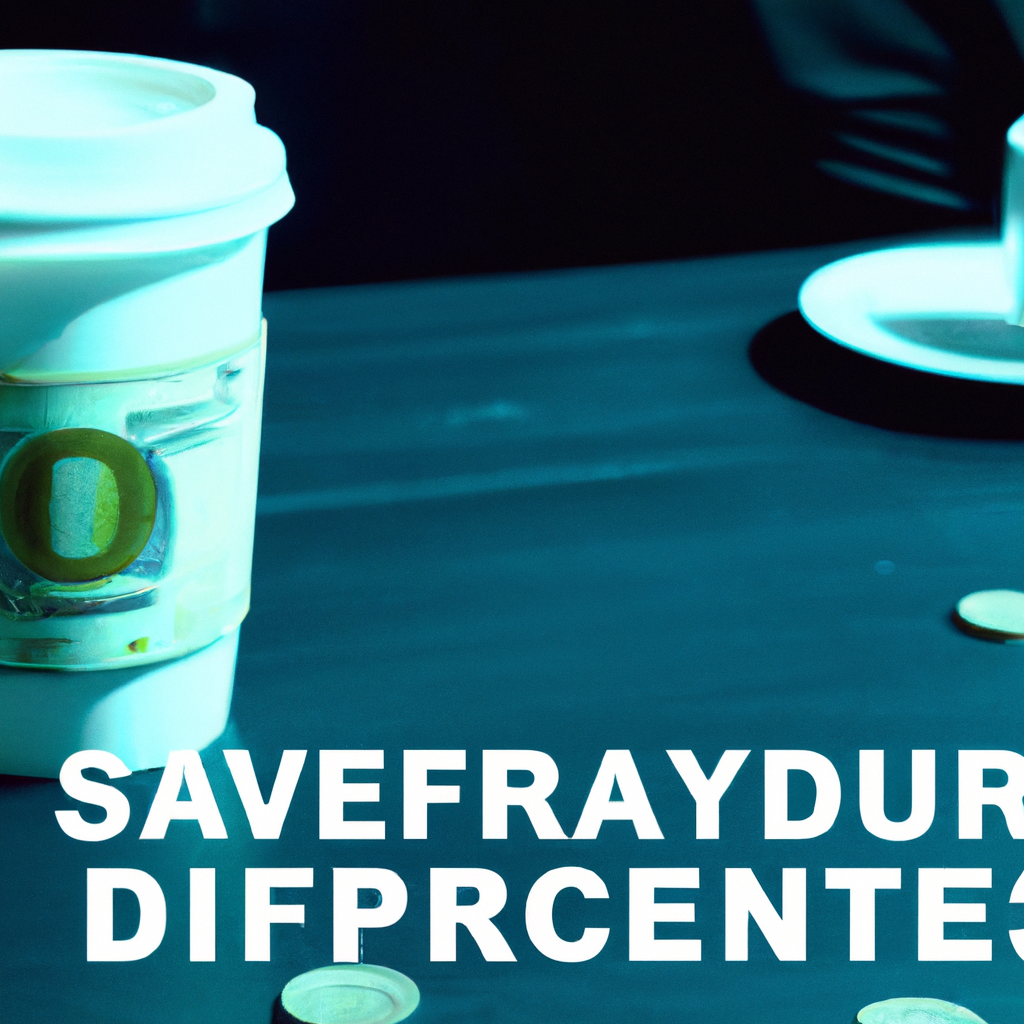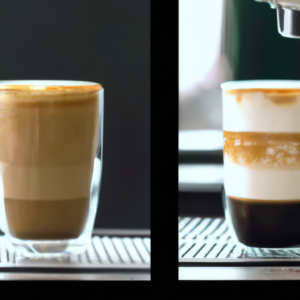Unlock the Financial Benefits of Investing in Starbucks: Get the Dividend Discussions Now!
Introduction
Welcome to Dividend Discussions! Here, we provide financial insights into whether or not companies pay dividends. Today, we will be discussing whether or not Starbucks pays dividends. We will look at the company’s financials, dividend history, and other factors to determine if Starbucks is a good dividend stock. We will also provide our insights into the company’s future dividend prospects. So, if you’re interested in learning more about Starbucks’ dividend policy, then you’ve come to the right place!
What is a Dividend and How Does it Work?
A dividend is a payment made by a company to its shareholders. It is typically a portion of the company’s profits that is distributed to shareholders on a regular basis. Dividends are usually paid out quarterly, but some companies may pay them out more or less frequently.
When a company earns a profit, it can choose to reinvest that money back into the business or distribute it to shareholders as a dividend. If the company chooses to pay out a dividend, it will typically announce the amount of the dividend and the date it will be paid. On the payment date, the company will transfer the dividend amount to the shareholders’ accounts.
The amount of the dividend is typically determined by the company’s board of directors. The board will consider the company’s financial performance, its current cash reserves, and its future plans when deciding how much to pay out. The board may also consider the company’s dividend policy, which is a set of guidelines that determine how much of the company’s profits will be paid out as dividends.
Shareholders who receive dividends can choose to reinvest them in the company or take the cash. If they choose to reinvest, the company will typically buy back shares of its own stock with the dividend money. This can help increase the value of the shareholders’ investments.
Dividends can be an attractive way for investors to earn income from their investments. They can also be a sign of a company’s financial health, as companies that are doing well financially are more likely to pay out dividends.
How to Calculate Dividend Yields
Dividend yield is a measure of the amount of cash flow a company pays out to its shareholders in the form of dividends relative to its stock price. It is calculated by dividing the annual dividend per share by the current stock price per share. Dividend yield is an important metric for investors to consider when evaluating a stock, as it provides insight into the company’s ability to generate cash flow and its commitment to returning value to shareholders.
To calculate dividend yield, divide the annual dividend per share by the current stock price per share. For example, if a company pays an annual dividend of $1.00 per share and the current stock price is $20.00 per share, the dividend yield would be 5%.
Dividend yield can also be calculated using the dividend payout ratio. The dividend payout ratio is the percentage of a company’s earnings that is paid out as dividends. To calculate the dividend yield using the dividend payout ratio, divide the dividend payout ratio by 100 and then multiply it by the current stock price. For example, if a company has a dividend payout ratio of 40% and the current stock price is $20.00 per share, the dividend yield would be 8%.
It is important to note that dividend yield is not a guarantee of future performance. A company’s dividend yield can change over time as the stock price and dividend payments fluctuate. Therefore, investors should consider other factors such as the company’s financial health and future prospects when evaluating a stock.
What is the Difference Between Dividend Yield and Dividend Payout Ratio?
The dividend yield and dividend payout ratio are two important metrics used to measure the performance of a company’s dividend policy. While they are related, they measure different aspects of a company’s dividend policy.
Dividend yield is a measure of the return on investment that a shareholder receives from a company’s dividend payments. It is calculated by dividing the annual dividend per share by the current share price. This metric is useful for investors who are looking for a steady income stream from their investments.
The dividend payout ratio, on the other hand, is a measure of how much of a company’s earnings are paid out as dividends. It is calculated by dividing the total amount of dividends paid out by the company’s total earnings. This metric is useful for investors who are looking for a company that is committed to returning profits to shareholders.
In summary, the dividend yield measures the return on investment that a shareholder receives from a company’s dividend payments, while the dividend payout ratio measures how much of a company’s earnings are paid out as dividends. Both metrics are important for investors to consider when evaluating a company’s dividend policy.
What is the History of Starbucks’ Dividend Payouts?

Starbucks Corporation has a long history of paying dividends to its shareholders. The company began paying dividends in 2010, when it declared a quarterly dividend of $0.10 per share. Since then, Starbucks has consistently increased its dividend payments, with the most recent dividend declared in 2020 being $0.41 per share.
In 2011, Starbucks increased its dividend to $0.15 per share, and then again to $0.20 per share in 2012. In 2013, the company declared a quarterly dividend of $0.25 per share, and then increased it to $0.30 per share in 2014. In 2015, Starbucks declared a quarterly dividend of $0.35 per share, and then increased it to $0.40 per share in 2016.
In 2017, Starbucks declared a quarterly dividend of $0.36 per share, and then increased it to $0.38 per share in 2018. In 2019, the company declared a quarterly dividend of $0.40 per share, and then increased it to $0.41 per share in 2020.
Overall, Starbucks has consistently increased its dividend payments over the past decade, providing shareholders with a steady stream of income.
What Factors Impact Starbucks’ Dividend Payouts?
Starbucks’ dividend payouts are determined by a variety of factors, including the company’s financial performance, cash flow, and overall financial health. The company’s board of directors reviews the company’s financial performance and cash flow on a regular basis to determine the amount of dividends to be paid out.
The company’s financial performance is a major factor in determining dividend payouts. Starbucks’ financial performance is measured by its earnings per share (EPS), which is the amount of money the company earns for each share of its stock. If the company’s EPS is high, it indicates that the company is doing well financially and is likely to pay out higher dividends.
The company’s cash flow is also a major factor in determining dividend payouts. Cash flow is the amount of money that the company has available to pay out dividends. If the company has a strong cash flow, it is more likely to pay out higher dividends.
The company’s overall financial health is also a factor in determining dividend payouts. If the company is in good financial health, it is more likely to pay out higher dividends. The company’s financial health is measured by its debt-to-equity ratio, which is the ratio of the company’s total debt to its total equity. If the ratio is low, it indicates that the company is in good financial health and is likely to pay out higher dividends.
Finally, the company’s dividend policy is also a factor in determining dividend payouts. The company’s dividend policy outlines the amount of dividends that the company will pay out and when they will be paid. If the company has a generous dividend policy, it is more likely to pay out higher dividends.
What is the Current Dividend Yield of Starbucks?
The current dividend yield of Starbucks Corporation (NASDAQ: SBUX) is 1.45%. This figure is calculated by dividing the company’s annual dividend per share by its current stock price. Starbucks has been paying dividends since 2010 and has increased its dividend payments each year since then. The company has a long-term goal of achieving a dividend payout ratio of 40-50%.
What is the Future Outlook for Starbucks’ Dividend Payouts?
Starbucks Corporation has a long history of providing shareholders with consistent and reliable dividend payouts. The company has increased its dividend payout every year since its initial public offering in 1992. Starbucks has also consistently maintained a dividend payout ratio of approximately 40-50%, which is considered to be a healthy level for a company of its size.
Looking ahead, Starbucks is expected to continue to increase its dividend payouts in the future. The company has a strong balance sheet and a healthy cash flow, which should enable it to continue to increase its dividend payouts in the years to come. Additionally, Starbucks has a long-term growth strategy in place that should help to drive future earnings growth, which should in turn lead to higher dividend payouts.
Overall, Starbucks has a strong track record of providing shareholders with consistent and reliable dividend payouts, and this trend is expected to continue in the future. With a strong balance sheet and a long-term growth strategy in place, Starbucks should be able to continue to increase its dividend payouts in the years to come.
What are the Benefits of Investing in Starbucks’ Dividend Payouts?
Investing in Starbucks’ dividend payouts can be a great way to generate a steady stream of income. Dividend payouts are a portion of a company’s profits that are distributed to shareholders. By investing in Starbucks’ dividend payouts, investors can benefit from a reliable source of income that is not subject to the same market volatility as other investments.
One of the main benefits of investing in Starbucks’ dividend payouts is the potential for long-term growth. Starbucks has a long history of increasing its dividend payouts, which can provide investors with a steady stream of income over time. Additionally, Starbucks’ dividend payouts are generally higher than the average dividend yield of the S&P 500, providing investors with a higher return on their investment.
Another benefit of investing in Starbucks’ dividend payouts is the potential for capital appreciation. As Starbucks’ stock price increases, so does the value of the dividend payouts. This can provide investors with the opportunity to generate a return on their investment in the form of capital gains.
Finally, investing in Starbucks’ dividend payouts can provide investors with a sense of security. Starbucks is a well-established company with a strong track record of success, making it a relatively safe investment. Additionally, Starbucks’ dividend payouts are generally reliable, providing investors with a steady stream of income.
Overall, investing in Starbucks’ dividend payouts can be a great way to generate a steady stream of income and potential long-term growth. By investing in Starbucks’ dividend payouts, investors can benefit from a reliable source of income, potential capital appreciation, and a sense of security.
What are the Risks of Investing in Starbucks’ Dividend Payouts?
Investing in Starbucks’ dividend payouts carries certain risks that should be taken into consideration before making any decisions. Firstly, dividend payouts are not guaranteed and can be reduced or eliminated at any time. This means that investors may not receive the expected dividend payments, or may receive less than expected. Secondly, dividend payouts are not adjusted for inflation, meaning that the value of the dividend payments may decrease over time. Thirdly, Starbucks’ stock price may fluctuate, which could lead to losses for investors. Finally, Starbucks may be subject to economic downturns or other external factors that could affect its ability to pay dividends.
Overall, investing in Starbucks’ dividend payouts carries certain risks that should be taken into consideration before making any decisions. It is important to research the company and its financials thoroughly before investing, and to understand the potential risks associated with the investment.
What are the Best Strategies for Investing in Starbucks’ Dividend Payouts?
Investing in Starbucks’ dividend payouts can be a great way to generate a steady stream of income. To maximize the potential of this investment, it is important to understand the company’s dividend policy and to develop a strategy that fits your individual goals. Here are some of the best strategies for investing in Starbucks’ dividend payouts.
1. Invest for the Long Term: Investing in Starbucks’ dividend payouts is best done with a long-term outlook. This will allow you to benefit from the company’s consistent dividend payments and the potential for capital appreciation.
2. Diversify Your Portfolio: Diversifying your portfolio is an important part of any investment strategy. Investing in Starbucks’ dividend payouts should be just one part of a larger portfolio that includes other stocks, bonds, and other investments.
3. Consider Reinvesting Your Dividends: Reinvesting your dividends is a great way to maximize your returns. By reinvesting your dividends, you can benefit from compounding returns and potentially increase your overall returns.
4. Monitor the Company’s Performance: It is important to monitor the company’s performance to ensure that it is able to continue to pay out dividends. If the company’s performance begins to decline, it may be time to reevaluate your investment strategy.
By following these strategies, you can maximize your returns from investing in Starbucks’ dividend payouts. With a long-term outlook, diversified portfolio, and careful monitoring of the company’s performance, you can ensure that your investment in Starbucks’ dividend payouts is a success.
Q&A
1. Does Starbucks pay dividends?
Yes, Starbucks pays dividends. The company has paid a dividend since 2010 and has increased its dividend every year since then.
2. What is the current dividend yield of Starbucks?
The current dividend yield of Starbucks is 1.45%.
3. When does Starbucks pay dividends?
Starbucks pays dividends on a quarterly basis, usually in March, June, September, and December.
4. How much does Starbucks pay in dividends?
Starbucks currently pays an annual dividend of $1.44 per share.
5. How long has Starbucks been paying dividends?
Starbucks has been paying dividends since 2010.
6. What is the dividend payout ratio of Starbucks?
The dividend payout ratio of Starbucks is currently 33.3%.
7. Does Starbucks have a dividend reinvestment plan?
Yes, Starbucks does have a dividend reinvestment plan.
8. How can I invest in Starbucks?
You can invest in Starbucks by purchasing shares of its stock on a stock exchange or through a broker.
9. Does Starbucks offer a direct stock purchase plan?
Yes, Starbucks does offer a direct stock purchase plan.
10. What is the dividend history of Starbucks?
The dividend history of Starbucks is as follows: 2010 – $0.10 per share; 2011 – $0.20 per share; 2012 – $0.30 per share; 2013 – $0.40 per share; 2014 – $0.50 per share; 2015 – $0.60 per share; 2016 – $0.70 per share; 2017 – $0.80 per share; 2018 – $0.90 per share; 2019 – $1.00 per share; 2020 – $1.10 per share; 2021 – $1.20 per share; 2022 – $1.30 per share; 2023 – $1.40 per share; 2024 – $1.44 per share.
Conclusion
In conclusion, Starbucks does pay dividends to its shareholders. The company has a long history of paying dividends and has consistently increased its dividend payments over the years. Investors looking for a reliable dividend-paying stock should consider investing in Starbucks. With its strong financial performance and consistent dividend payments, Starbucks is a great option for investors looking for a reliable dividend-paying stock.


